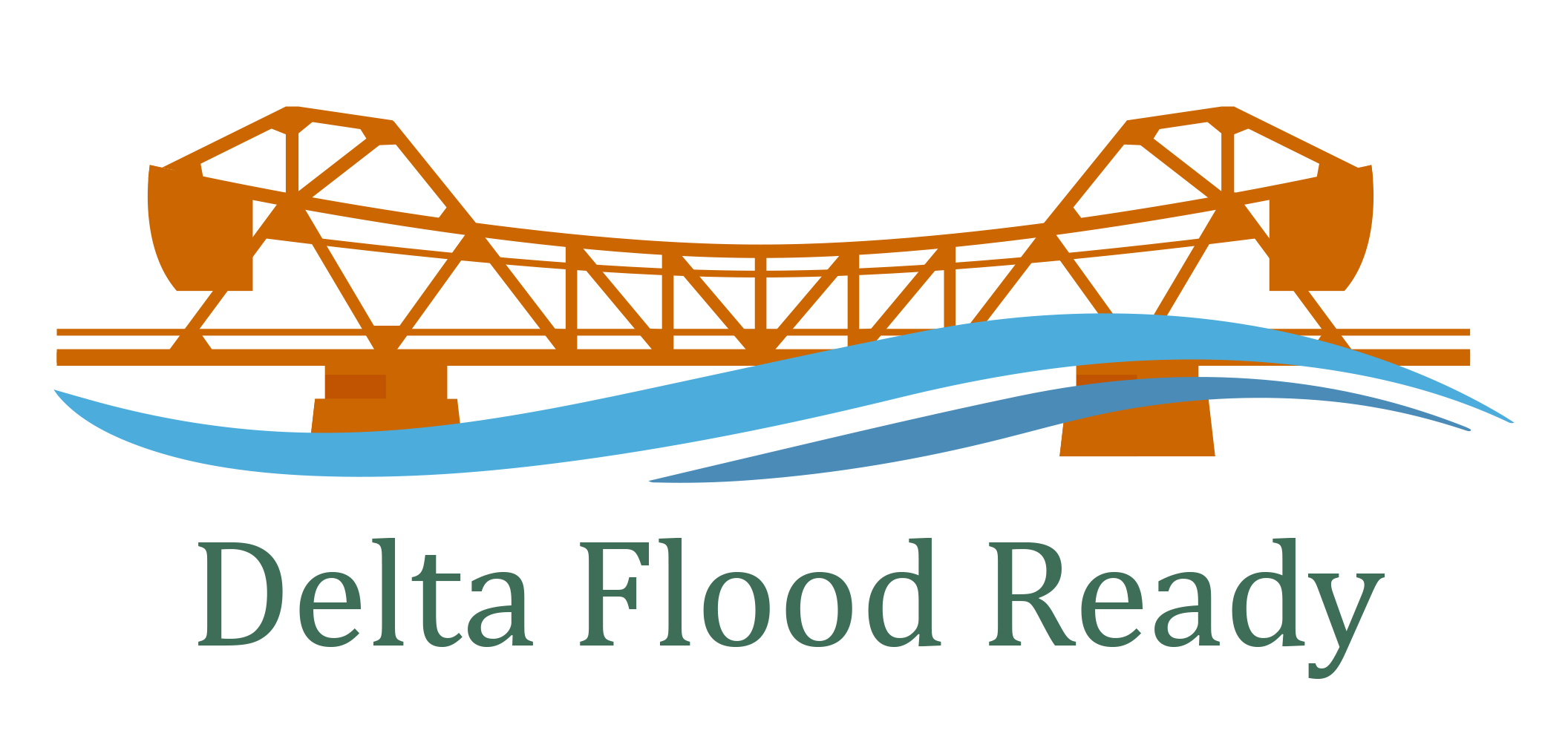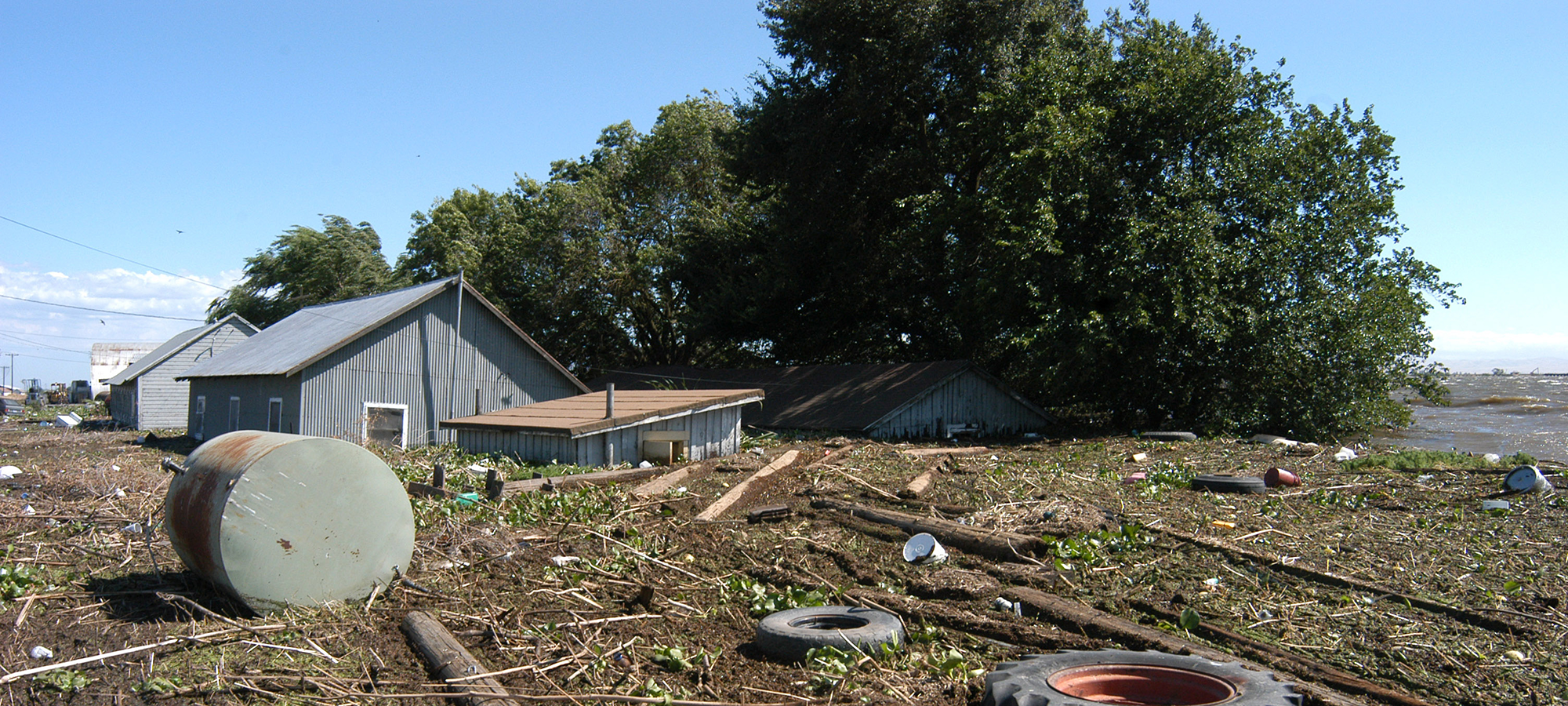Although flooding on leveed Delta islands is a rare occurrence, flood risk is a fact of life in the Delta. Floods can happen with little or no warning. A powerful rainstorm, rising river, or catastrophic levee failure can happen quickly. Property owners must not overlook flood preparations for their homes, other buildings, and businesses.
According to the Federal Emergency Management Agency, the average flood claim for a residence is around $40,000. Investing time and money to protect and maintain your property will save you money after a flood event and help protect your neighbors, rescue workers, and even you!
Before the Flood
There is no shortage of items to consider when preparing your property for a potential flood. Begin with waterproofing any subareas, including basements and possible entryways such as window wells. Waterproofing includes making sure rain gutters and storm drains are clear and the slope surrounding your home and other buildings directs water away. Check with your local flood control agency if you need to re-grade, fill, or alter your property as a permit may be required. Make sure sump pumps are in working order and tested on a regular basis.
Storm surge can cause a backup of sewage lines and force that sewage into residences and businesses. Speak to a licensed plumber to see what options are available to prevent backflow from entering your property through connections like bathtubs, sinks, and dishwashers.
Many homes in the Delta rely on propane for heat and cooking and have free-standing storage tanks. Farms and other agricultural businesses may store gasoline or other fuels onsite. It’s important to anchor fuel tanks to prevent them from becoming floating hazards that can explode and cause fire damage. Keep trash and discarded equipment and materials from cluttering your property. These items can become floating hazards when floodwaters rise.
Bottles of household cleaners and other chemicals can combine with floodwaters to create a poisonous soup dangerous to animals, rescue workers, or returning property owners. Store these chemicals as high as possible and in cabinets that can be tightly secured.
Leaving Your Property
When leaving your property, shut off all utilities coming into your home and surrounding buildings at their source, including electricity, gas, and water. Yes, even water pipes can burst during a flood event causing additional water damage to your property!
Make sure you know how to safely shut down your water main, electrical breakers, and gas service in the event of an evacuation.
Disconnect appliances to reduce the chance of electric shock when power is restored. It also provides the opportunity to inspect connections for damage before utilities are restored. If you are able, raise movable appliances as high as possible to protect them from rising water.
Make sure cabinets and other storage units with hazardous materials and chemicals are secured with a lock or latch. A zip tie around the handles of a kitchen cabinet should prevent chemicals from floating and posing risks.
Finally, move vehicles, equipment, and livestock to the highest areas possible if you are not able to take them with you.
For more information on livestock, visit the Pet & Livestock Ready webpage.
Note: You may have to leave your property at a moment’s notice, but sometimes you may have time to prepare with a flood warning. Plan ahead for different scenarios to prioritize your actions depending on how much time you have.

